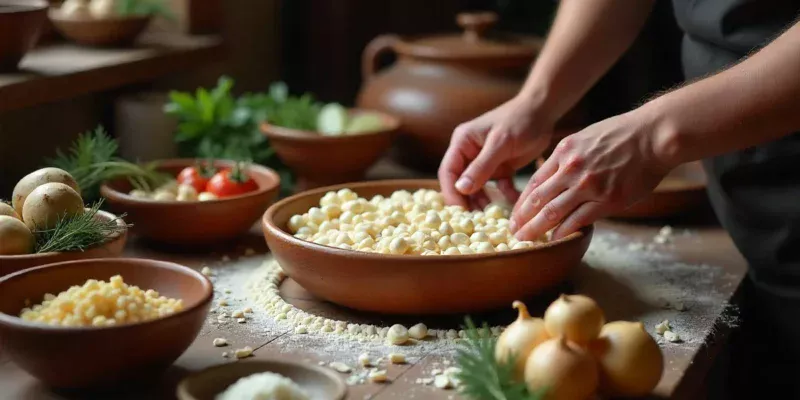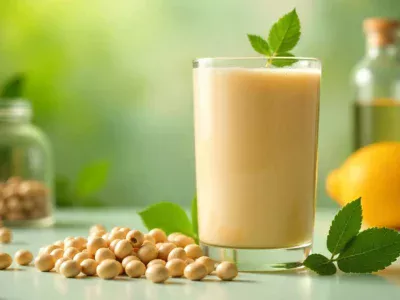
Sodziu has become one of the most talked-about traditional foods in 2025, capturing the attention of food lovers worldwide. This remarkable culinary creation represents both a delicious dish and beverage, plus a deeper cultural concept tied to village life and heritage cuisine. What makes Sodziu special is its dual nature as both nourishment and tradition.
The word itself connects to Lithuanian culture, where “sodžius” means village or farmstead. This connection explains why Sodziu represents more than just food—it embodies rural traditions, communal meals, and authentic cooking methods passed down through generations.
Farm-to-table restaurants and artisanal beverage makers are embracing Sodziu as part of a growing movement toward sustainable food and heritage cuisine. The rising popularity of fermented foods and probiotic beverages has also boosted interest in Sodziu, making it a perfect blend of old and new culinary traditions.
What Is Sodziu?
Understanding what is Sodziu requires looking at both its culinary and cultural meanings. As a food, Sodziu refers to various traditional dishes and beverages made from grains like rice, barley, and millet, often combined with root vegetables, legumes, and seasonal ingredients.
The beverage version of Sodziu is a fermented rice drink similar to Korean makgeolli or traditional kvass. This rice beverage undergoes natural fermentation using wild yeast and lactic acid bacteria, creating a mildly alcoholic drink with probiotic properties.
Sodziu meaning extends beyond just food into cultural territory. The Lithuanian connection to “sodžius” emphasizes village cuisine and rustic cooking traditions. This cultural aspect explains why Sodziu dishes often feature communal preparation and shared meals, reflecting the social nature of rural life.
The Origins and History of Sodziu
The Sodziu origin story begins in rural villages where families developed these recipes out of necessity and tradition. Historical records suggest these food preparations emerged from the need to preserve seasonal ingredients and create nutritious meals using available resources.
Lithuanian cuisine plays a central role in Sodziu’s development, though similar preparations appear across the Baltic region. Rural traditions emphasized using every part of available ingredients, leading to the hearty, nutritious character of traditional Sodziu dishes.
Agricultural cycles influenced Sodziu preparation, with different versions emerging for various seasons. The cultural roots of Sodziu extend into community celebrations and family gatherings, where village festivals often featured large communal preparations that strengthened social bonds.
Ingredients and Preparation of Sodziu
A traditional Sodziu recipe typically starts with grains as the foundation. Rice, barley, millet, and rye form the base, with each grain contributing different flavors and textures. Root vegetables like potatoes and seasonal produce add substance and nutritional value.
How to make Sodziu depends on whether you’re preparing the dish or beverage version. For the fermented beverage, the process begins with cooking rice or other grains, then cooling them to room temperature. Wild yeast or starter culture begins the fermentation process.
Sodziu ingredients for the dish version include legumes, slow-cooked meats like pork or beef, and aromatic vegetables such as dill, caraway, garlic, and onion. These ingredients are combined using braising or slow-cooking techniques that allow flavors to develop fully over several hours.
Variations of Sodziu Across Regions
Sodziu variations reflect the diverse food cultures where these traditions developed. In Lithuanian regions, Sodziu often appears as a hearty stew combining root vegetables, grains, and preserved meats. These warming dishes provide necessary nutrition during cold months.
Some regions prepare Sodziu as delicate dumplings filled with seasoned grain mixtures. These lighter versions work well for spring and summer meals, often served with sour cream or pickled vegetables.
The rice spirit version of Sodziu shows influence from Asian fermentation techniques, creating a fermented drink that resembles makgeolli but maintains distinctive characteristics from local ingredients. Traditional recipes passed down through families create unique household variations that preserve the handmade, artisanal character.
The Cultural Significance of Sodziu
The cultural significance of Sodziu extends far beyond its role as food or drink. In village traditions, preparing Sodziu represented community cooperation and shared knowledge. Families would gather during harvest seasons to process grains and vegetables together, strengthening social bonds.
Village festivals and celebrations often featured communal Sodziu preparation as central activities. These events served multiple purposes: preserving traditional knowledge, strengthening community relationships, and creating shared cultural experiences.
Heritage cuisine like Sodziu carries deep symbolic meaning about authenticity and connection to ancestral ways of life. The ritual aspects of Sodziu preparation create meaningful experiences beyond simple nutrition, requiring patience and attention that contrast with fast-food culture.
Sodziu in Modern Food Trends
Sodziu today perfectly fits current movements toward artisanal beverages and authentic food experiences. Craft distilleries and small-batch producers are experimenting with traditional fermentation methods to create unique products that appeal to adventurous consumers.
The farm-to-table movement embraces Sodziu because of its emphasis on local, seasonal ingredients and traditional preparation methods. Probiotic foods have gained significant popularity, and fermented Sodziu beverages offer natural probiotic benefits through lactic acid bacteria and wild yeast.
Food tourism centered around eco-villages and traditional farming communities often features Sodziu experiences. The artisanal beverage market has embraced traditional fermented drinks like Sodziu as alternatives to commercial alcoholic beverages.
Where to Experience or Buy Sodziu
Finding authentic Sodziu requires knowing where to look for traditional producers and cultural experiences. Farmers’ markets often feature small-batch producers who make traditional fermented beverages and prepared foods using heritage recipes.
Eco-village tourism destinations frequently offer Sodziu experiences as part of their cultural programming. Some specialty restaurants focusing on heritage cuisine include Sodziu-inspired dishes on their menus, working with local producers or preparing traditional versions in-house.
Online sources provide access to traditional recipes, fermentation supplies, and sometimes finished products from small producers. Local co-ops and specialty food stores in areas with strong cultural heritage may carry traditional Sodziu products or ingredients for home preparation.
Conclusion
Sodziu represents a fascinating intersection of traditional food culture and contemporary culinary interests. As both a nourishing dish and fermented beverage, it embodies the wisdom of rural communities who developed sustainable, healthy food systems long before these concepts became modern trends.
The heritage cuisine movement has rediscovered Sodziu’s value as authentic cultural expression and nutritious food preparation. Modern food enthusiasts appreciate Sodziu’s versatility and health benefits while respecting its cultural origins.
Exploring Sodziu through cooking, tasting, or cultural tourism offers rewarding ways to connect with heritage food traditions while supporting communities that preserve these valuable practices. Whether you’re interested in fermentation techniques, cultural history, or simply delicious food, Sodziu provides rich opportunities for discovery and appreciation.






